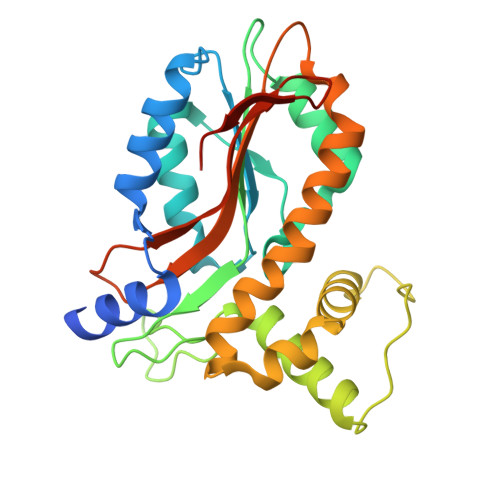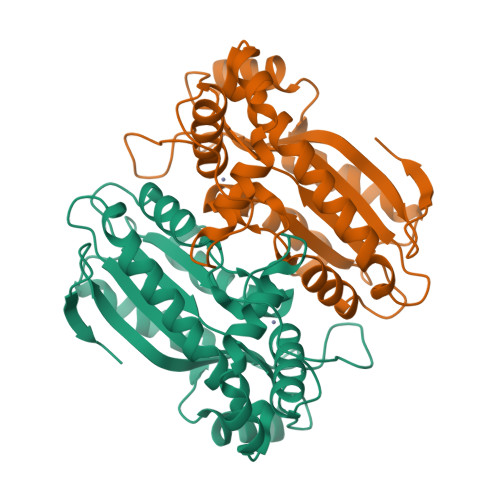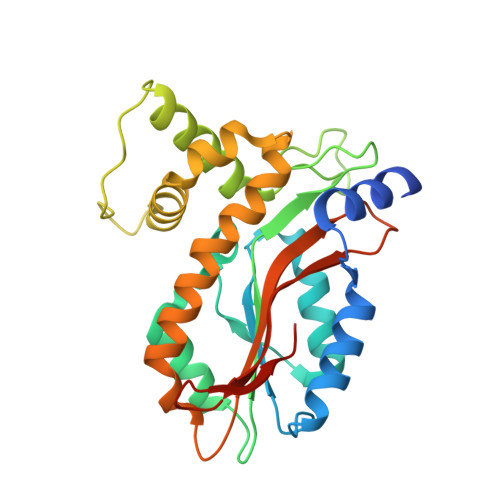Structural and biochemical characterization of novel carbonic anhydrases from Phaeodactylum tricornutum.
Jin, S., Vullo, D., Bua, S., Nocentini, A., Supuran, C.T., Gao, Y.G.(2020) Acta Crystallogr D Struct Biol 76: 676-686
- PubMed: 32627740
- DOI: https://doi.org/10.1107/S2059798320007202
- Primary Citation of Related Structures:
6KFS - PubMed Abstract:
Carbonic anhydrases (CAs) are a well characterized family of metalloenzymes that are highly efficient in facilitating the interconversion between carbon dioxide and bicarbonate. Recently, CA activity has been associated with the LCIB (limiting CO 2 -inducible protein B) protein family, which has been an interesting target in aquatic photosynthetic microorganisms. To gain further insight into the catalytic mechanism of this new group of CAs, the X-ray structure of a highly active LCIB homolog (PtLCIB3) from the diatom Phaeodactylum tricornutum was determined. The CA activities of PtLCIB3, its paralog PtLCIB4 and a variety of their mutants were also measured. It was discovered that PtLCIB3 has a classic β-CA fold and its overall structure is highly similar to that of its homolog PtLCIB4. Subtle structural alterations between PtLCIB3 and PtLCIB4 indicate that an alternative proton-shuttle cavity could perhaps be one reason for their remarkable difference in CA activity. A potential alternative proton-shuttle route in the LCIB protein family is suggested based on these results.
Organizational Affiliation:
School of Biological Science, Nanyang Technological University, 60 Nanyang Drive, Singapore 637551, Singapore.



















